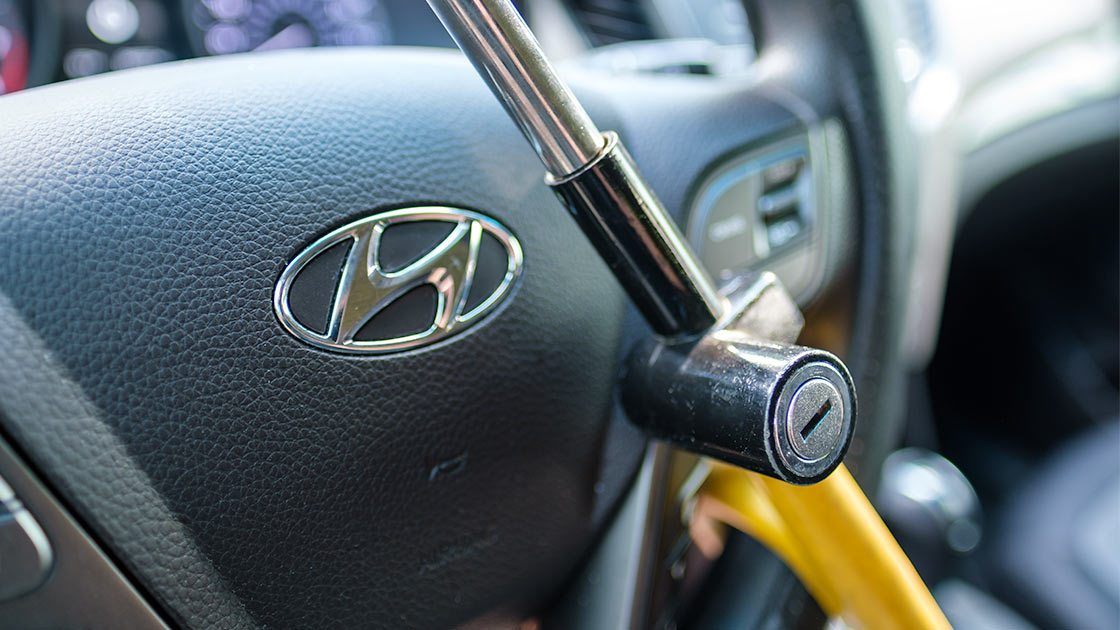Hyundais, Kias are easy targets amid boom in vehicle thefts
September 22, 2022

When it comes to theft, bargain-priced vehicles manufactured by Kia and Hyundai now rival muscle cars and luxury SUVs as top targets, a Highway Loss Data Institute analysis of 2021 insurance claims shows.
Among newer models, whole vehicle theft claims were highest for the Dodge Charger SRT Hellcat, relative to its numbers on the road over 2018-22. But among 2015-19 model-year vehicles, theft claims were nearly twice as common for Hyundai and Kia vehicles as a group as for all other manufacturers, according to a recent HLDI report.
“Car theft spiked during the pandemic,” said HLDI Senior Vice President Matt Moore. “These numbers tell us that some vehicles may be targeted because they’re fast or worth a lot of money and others because they’re easy to steal.”
Many 2015-19 Hyundai and Kia vehicles lack electronic immobilizers that prevent thieves from simply breaking in and bypassing the ignition. The feature is standard equipment on nearly all vehicles of that vintage made by other manufacturers.
“Our earlier studies show that vehicle theft losses plunged after immobilizers were introduced,” said Moore. “Unfortunately, Hyundai and Kia have lagged behind other automakers in making them standard equipment.”
Immobilizers were already standard on 62 percent of models from other manufacturers in model year 2000. But even in model year 2015, when immobilizers were standard on 96 percent of other manufacturers’ vehicles, they were standard on only 26 percent of Hyundai and Kia vehicle models.
“If it doesn’t have an immobilizer, it does make it somewhat easier to steal,” said Darrell Russell, a former auto theft investigator who is now director of operations, vehicles, at the National Insurance Crime Bureau (NICB).
In 2021, that comparative ease went viral on social media. In one of the earliest-affected states, Wisconsin, the fad caused overall losses from Hyundai-Kia thefts — the amount paid on theft claims per insured vehicle year — to soar to more than 30 times the 2019 level. An insured vehicle year refers to one vehicle insured for one year, two vehicles insured for six months and so forth.
“Hyundai Motor America is concerned about the recent rise in auto thefts of certain Hyundai model vehicles,” the company said in a statement. “While all of our vehicles meet or exceed Federal Motor Vehicle Safety Standards, unfortunately, our vehicles have been targeted in a coordinated effort on social media.”
Kia also said their vehicles meet federal standards. The company added that “criminals are seeking vehicles solely equipped with a steel key and turn-to-start ignition system” and “the majority of Kia vehicles in the United States are equipped with a key fob and push-button-to-start system” that makes them more difficult to steal.
Russell said that the joyriding videos posted on social media and the method employed by the thieves suggest that most Hyundai and Kia vehicles are stolen only to be abandoned later.
“When you forcibly break the ignition, you’re causing so much damage that it’s not easy to re-VIN and resell the vehicle on the open market,” Russell said, referring to thieves who replace vehicle identification numbers with fake ones or substitutes from salvaged vehicles.
HLDI tracks “whole vehicle theft” by monitoring theft claims under comprehensive insurance that mirror the dollar value of the vehicle covered by the policy. It also defines the most stolen vehicles differently from the NICB and law enforcement agencies, measuring the frequency of theft by the number of claims per 1,000 insured vehicle years. This accounts for the fact that, all other things being equal, vehicles that are more common will be stolen more often. By that metric, late model variants of the Dodge Charger, Dodge Challenger and Infiniti Q50 have consistently had some of the highest whole vehicle theft claim frequencies for nearly a decade. But the Hyundai Accent, Kia Rio and both the two-wheel-drive and four-wheel-drive versions of the Kia Sportage all climbed into the top 20 in HLDI’s latest whole vehicle theft report.
Based on news reports and police advisories, Hyundai and Kia thefts have continued steadily, if not accelerated, in 2022. Police in Grand Rapids, Michigan, for instance, say there were nearly four thefts or attempted thefts per day between May 1 and July 7 in that city. Beginning in June last year, Hyundai and Kia owners in Illinois, Iowa, Kentucky, Missouri and Wisconsin have filed class-action lawsuits against the sister companies, which have made immobilizers standard on their newest models and taken action to address the vulnerable vehicles already on the road.
For example, both manufacturers are working with local police departments to make steering wheel locks available to affected owners. Hyundai also says it has identified a security kit it believes will help. The kit will be available for purchase and installation at Hyundai dealerships and other authorized installers beginning in October. Immobilizers are standard on all Hyundai vehicles built after Nov. 1, 2021, and immobilizers were installed on all 2022 Kia models and trims either at the beginning of the model year or as a running change.
The NICB emphasizes that professional thieves can steal any car but advises owners to take a layered approach to protect their vehicles, in line with their budget and perception of risk. Along with steering-wheel, brake-pedal, brake and wheel locks, it’s possible to install fuse cutoffs and kill switches as well as aftermarket immobilizer systems.